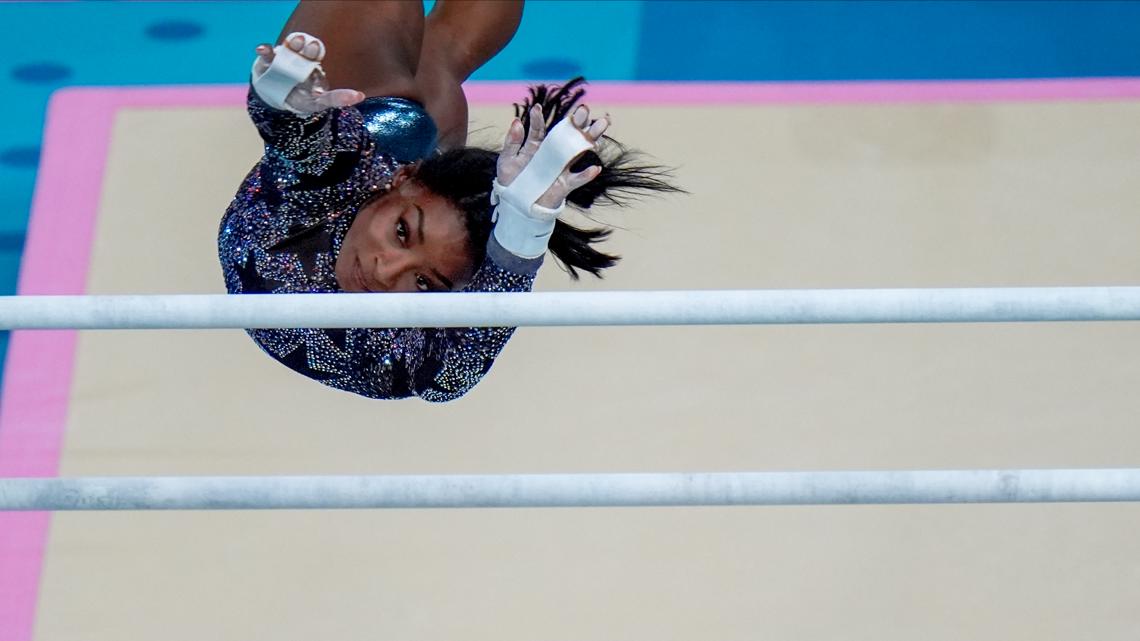PARIS, France — During the Olympics, women gymnasts compete on four different apparatus.
One of those is the uneven bars, where athletes do handstands, flips and somersaults while swinging themselves between two parallel bars set at different heights.
How far apart are uneven bars?
It actually depends on the gymnast. They can be adjusted anywhere from 4 feet, 3 inches to 5 feet, 11 inches apart to fit the size of the person competing, according to NBC Olympics.
It's a deduction if a gymnast hits the other bar with their foot, so getting this spacing right is important.
This is a change from the original uneven bars, first introduced at the World Championships in 1934 and added the Olympic Games in 1952. At that time, they just used the same apparatus as men did for parallel bars and set the heights differently. This meant the bars were set much closer together and athletes could even move between them while holding onto both at once.
A separate piece of equipment started being manufactured in the 1970s. The bars were changed from all wood to the fiberglass core ones used today, giving them more flexibility. That is also when the bars began drifting farther apart leading to more complex releases.
The heights of the bars remains consistent between gymnasts. The lower bar is set 5 feet, 5 inches from the ground and the higher bar is 8 feet off the mat.
Gymnasts do also get a deduction for hitting the mat with their feet during their routine.




